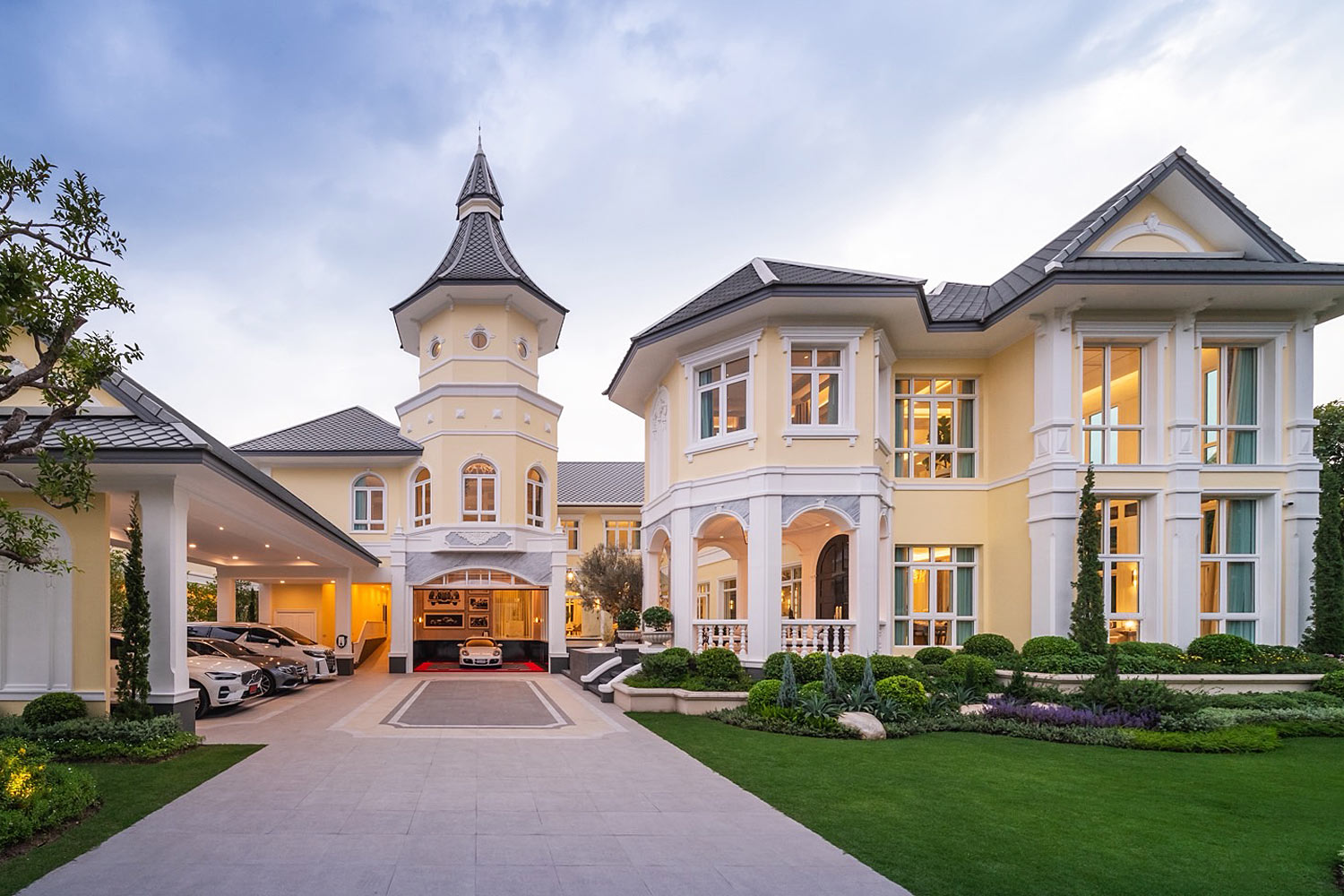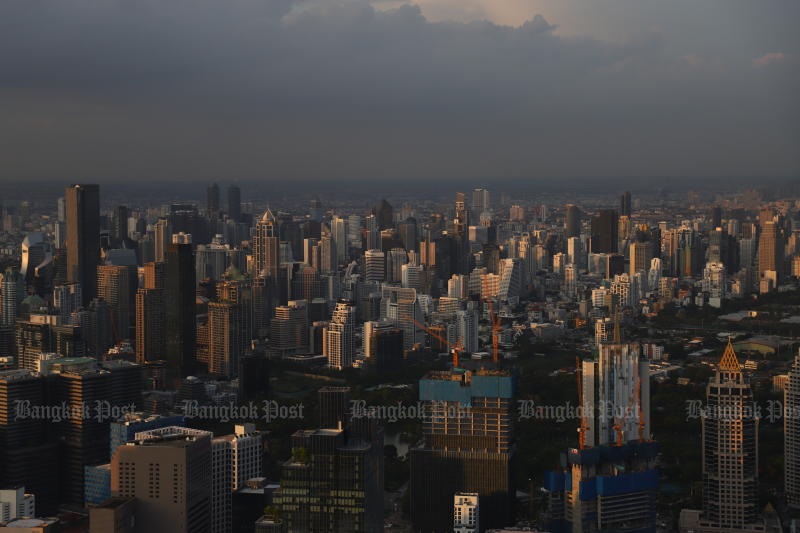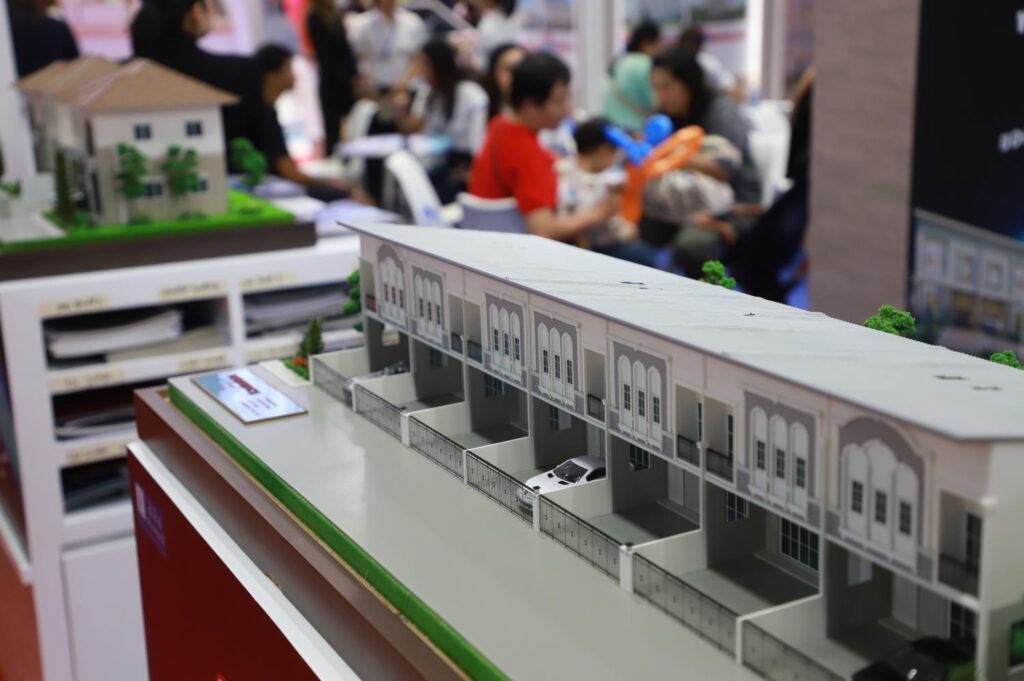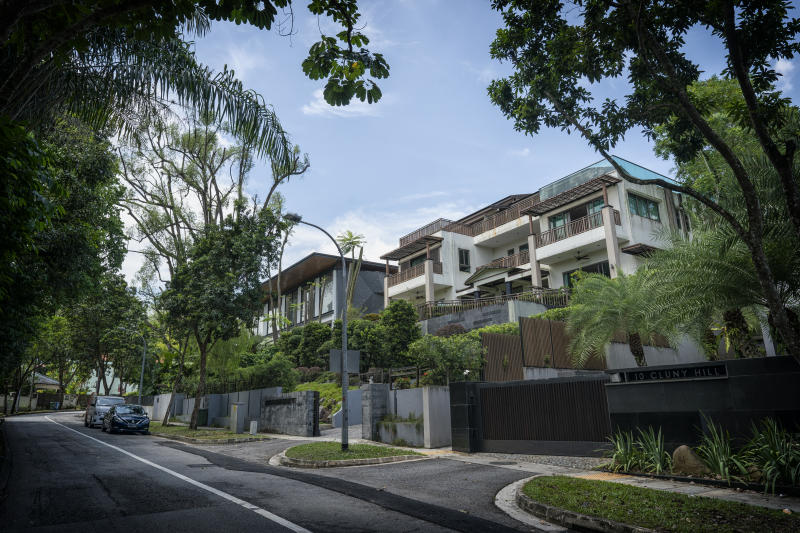The Royal Residence Kaset-Nawamin is entering a new phase as Frasers Property (Thailand) (FPT) rolls out 31 remaining single detached houses priced from 107 to 300 million baht. The move targets ultra-high-net-worth individuals who are seeking prestigious, fully specified homes within a mature, well-regarded estate. These homes are the final unsold units from The Royal Residence, a project originally launched by TCCCL Sena Co, a subsidiary of the TCC Group owned by the Sirivadhanabhakdi family, who remain among FPT’s principal shareholders. The acquisition occurred in December 2021, and three of the 31 units have already found buyers among current residents seeking additional space for growing families, despite the new prices being about three times what they previously paid. This development underscores a strategic effort to capitalize on the enduring appeal of a high-end, established neighborhood while extending the project’s living options for UHNW buyers.
Project origins and strategic rationale
In 2008, TCCCL Sena unveiled The Royal Residence on a 76.75-rai parcel along Prasert-Manukit Soi 27 in the Kaset-Nawamin area, delivering 79 initial units with price tags ranging from 35 to 120 million baht. Over time, a portion of these units remained unsold, and the estate’s owners eventually transferred the asset to Frasers Property (Thailand) in late 2021. The decision to reintroduce the 31 remaining units under FPT’s management reflects a deliberate strategy to leverage the estate’s established branding, architectural language, and location advantages to appeal to the most affluent buyers who prize security, scale, and design coherence within a single, cohesive community. By returning to market these houses as part of The Royal Residence, FPT aims to reinforce the project’s premium positioning while expanding options for buyers who desire larger, more private family homes in a respected locale.
The Sirivadhanabhakdi family, a cornerstone of the project’s ownership history, remains closely linked to the housing venture through FPT’s shareholding and governance. This continuity is part of the broader narrative of the estate, where prestige, heritage, and a trusted network of developers and residents blend to create a highly differentiated product in Bangkok’s luxury segment. The decision to relaunch the remaining units also signals a measured response to persistent demand from UHNW buyers who require substantial plots, bespoke interiors, and a lifestyle that balances privacy with proximity to the city’s business hubs. By keeping the exterior architectural language faithful to the original Oriental Victorian styling, the new launch preserves visual harmony with the broader estate while allowing for interior modernization that aligns with contemporary living patterns.
Unit details and specifications
The 31 units on offer vary significantly in size and configuration, reflecting an emphasis on scale and bespoke potential. The smallest available unit sits on a 184-square-wah plot and provides a usable floor area of 560 square metres, offered at 107 million baht in a bare-shell configuration. The largest unit occupies a 374-square-wah plot, with 1,166 square metres of usable space, and is sold fully decorated and furnished for 300 million baht. These measurements illustrate a spectrum of living footprints within a single gated development, designed to accommodate a range of family dynamics and lifestyle preferences while maintaining a consistent architectural backbone.
In practical terms, the 184-square-wah site translates to roughly 736 square metres of land, while the 374-square-wah site equates to about 1,496 square metres. The internal floor areas are correspondingly substantial, enabling expansive layouts that can include multiple living zones, large entertaining spaces, and specialty rooms that are appealing to UHNW buyers. The bare-shell option provides a canvas for buyers who wish to implement highly personalized interiors, while the fully decorated and furnished alternative offers a turnkey solution for those who prioritize speed-to-move and a seamless luxury experience. Across the portfolio, the emphasis remains on generous proportions, premium materials, and design features that support both immediate livability and long-term value retention.
Design language and interior innovations
A central design commitment across the newly launched units is to preserve the original Oriental Victorian architectural language that defined the existing phase of The Royal Residence, ensuring visual harmony within the estate. The external elevations retain the historic character, including distinctive massing, pillared entryways, and a refined silhouette that aligns with the project’s pedigree. Internally, however, the residences have been reimagined with modern functionality to satisfy today’s lifestyle demands and attract a new generation of buyers who expect cutting-edge conveniences without compromising classic elegance.
Key features highlighted by the developer include a supercar garage with potential for a car lift in the future, a strong room for secure storage, an indoor sunken area that blends interior and exterior living, and a glass-enclosed space—referred to as a glass house—that enhances light, views, and the feeling of openness. These amenities speak to the preferences of ultra-wealthy purchasers who seek both practical versatility and aspirational design cues. The interior refresh is designed to be more aligned with contemporary standards, providing state-of-the-art services, smart-home capabilities, and luxurious finishes while maintaining the exterior charm that anchors the estate’s identity.
Buyer profile, financing, and market positioning
The buyer mix for the smallest unit typically comprises individuals with total assets of at least 500 million baht, while the largest unit attracts buyers with assets exceeding 1 billion baht. A striking detail from the market is that around 80–90% of purchases for these properties are completed in cash, underscoring the liquidity and certainty sought by ultra-high-net-worth clients in acquiring such bespoke homes. The commitment to cash transactions reinforces the perception of low financing risk for developers in this segment and reflects buyers’ preference for certainty, speed, and direct control over terms in high-value real estate deals.
An important buyer sentiment note is that those who purchased units at the project over a decade ago are returning to the market to acquire additional homes for expanding families, even though the newly launched units carry prices that are considerably higher than their original investments. This behavior demonstrates a durable demand for space, privacy, and the prestige associated with living within an established, iconic estate. It also highlights the emotional and lifestyle value of owning multiple homes within a single, cohesive community, where residents can enjoy a shared sense of place and camaraderie with neighbors who appreciate similar standards of living.
Architectural harmony and development challenges
Maintaining architectural harmony while introducing new units within an existing development presents both opportunities and challenges. Mr. Pawarun, a senior executive at FPT responsible for housing project development, notes that preserving the original Oriental Victorian style is vital for ensuring the new homes blend with the established character of The Royal Residence. Achieving this balance requires careful design decisions, including matching façade treatments, rooflines, materials, and proportioning that respect the estate’s visual language while allowing for modern interiors that meet today’s expectations.
Designing new homes within a mature development also requires thoughtful integration with existing infrastructure, including roads, drainage, utilities, and landscape elements. The project needs to respect the established streetscape and ensure that new construction does not disrupt the resident experience. At the same time, the interiors must be updated with contemporary functionality to appeal to buyers who demand high-end kitchens, spa-like bathrooms, smart-home systems, and flexible living spaces that can accommodate evolving family needs and entertainment lifestyles. The goal is to deliver a product that feels both timeless and current, reinforcing the estate’s long-term appeal.
Market context and macro considerations
From a broader perspective, the ultra-luxury segment in Bangkok continues to attract interest from international and domestic buyers who value scale, privacy, and personalized service. The Royal Residence Kaset-Nawamin’s renewed launch aligns with a trend where developers curate highly curated, turnkey experiences that combine architectural heritage with modern luxury. The pricing band of 107 million to 300 million baht positions the project clearly within the upper tier of the Bangkok market, appealing to families and executives who require substantial plots, exclusive amenities, and a living environment that supports both private retreat and social prestige.
In addition to design and location, macro factors such as global currency movements, interest rates, and the availability of high-net-worth financing influence buyer behavior. The reliance on cash purchases in this segment suggests a lagged sensitivity to short-term financing conditions, with buyers prioritizing certainty and speed of ownership. The estate’s location in Kaset-Nawamin, an area known for its established residential appeal, contributes to its resilience by offering a tranquil, country-house-like ambiance within reach of urban amenities and business districts.
Economic considerations and risk factors for UHNW buyers
While the US tariff environment has been cited as a potential headwind for some ultra-luxury buyers who are business owners with US exposure, others—particularly those not tied to the export sector—may experience little to no impact. This nuanced dynamic reflects the complex cross-border considerations that UHNW buyers weigh when acquiring luxury real estate. The potential tariff impact underscores the importance of macroeconomic awareness for buyers whose portfolios span multiple geographies and economic cycles. Nevertheless, the intrinsic value of a stately, secure, and meticulously designed residence within a prestigious Bangkok enclave remains a powerful draw for those seeking lasting capital preservation and lifestyle benefits.
The development also faces typical risks associated with high-end projects in mature communities, such as market saturation in certain subsegments, potential shifts in demand for ultra-large floor areas, and the need to continually refresh interior features to stay aligned with evolving luxury standards. However, the combination of a storied architectural lineage, the safety and privacy of a gated setting, and the prospect of a bespoke interior environment can mitigate these risks by maintaining strong residual value and appeal over time.
Operational readiness and future prospects
As buyers finalize selections, FPT’s operational approach centers on delivering a seamless experience from inquiry to handover. The company’s strategy emphasizes coherence with the estate’s established identity, ensuring that new units contribute to the overall sense of prestige while addressing the practical needs of UHNW households. The readiness of the 31 remaining units to meet purely cash-based transactions further enhances the marketing narrative of speed, certainty, and exclusivity, which are critical in this market segment.
Looking ahead, the project’s continued success will depend on sustaining demand for large, luxurious homes within a trusted, historic framework. The ability to offer highly customizable interiors, while preserving exterior uniformity and a shared sense of community, will likely be a differentiator for FPT in competing for UHNW buyers who value both luxury and legacy. The Royal Residence Kaset-Nawamin’s refined balance of heritage architecture and modern amenities positions it as a compelling choice for buyers seeking a premium living environment that marries timeless design with contemporary convenience.
Community, lifestyle, and integration with the surrounding area
Beyond the individual properties, the estate’s success hinges on cultivating a cohesive community experience. Residents of The Royal Residence benefit from a sense of exclusivity, security, and curated living that aligns with their high-end lifestyles. The integration of modern interior features with a preserved exterior aesthetic supports a living environment where families can grow while retaining a connection to the estate’s historical character. As the project evolves, ongoing maintenance, landscape management, and community amenities will play pivotal roles in sustaining the estate’s appeal and ensuring long-term value for current and future homeowners.
The Kaset-Nawamin neighborhood itself offers a balance of accessibility and serenity, with proximity to key city centers, educational institutions, healthcare facilities, and leisure opportunities. The well-established nature of the area adds an additional layer of attractiveness for UHNW buyers who require reliable access to both private and public services without sacrificing the quiet, exclusive ambiance that a luxury residence demands. This synergy between estate design and neighborhood context underpins the project’s distinctive value proposition.
Conclusion
Frasers Property (Thailand) has strategically reactivated The Royal Residence Kaset-Nawamin by introducing 31 remaining units priced up to 300 million baht, targeting ultra-high-net-worth buyers who seek scale, privacy, and a storied architectural language within a mature, prestigious estate. The units, which range from a 107 million baht bare-shell option on a compact plot to a fully decorated 300 million baht residence on a larger site, epitomize the spectrum of luxury living available within this single project. The sale to three existing residents seeking additional space illustrates the enduring appeal of the estate for long-standing homeowners who value family growth opportunities within a familiar, exclusive community.
The acquisition by FPT, with its ties to the Sirivadhanabhakdi family, reinforces the estate’s prestige and signals a disciplined approach to preserving the project’s identity while introducing contemporary interior enhancements. The exterior’s continued fidelity to the Oriental Victorian design creates a visually cohesive neighborhood that respects its heritage while offering modern functionalities, such as a supercar garage with lift potential, a strong room, an indoor sunken area, and a glass house. Buyers are drawn by substantial asset bases, strong cash liquidity, and a preference for turnkey solutions or highly personalized interiors that reflect their lifestyle and status.
Looking forward, the project’s success will hinge on sustaining demand from UHNW buyers who value space, privacy, and a curated living environment within Bangkok’s luxury real estate landscape. The balance between preserving historical architectural cues and delivering cutting-edge interior features will be crucial to maintaining resonance with both existing residents and new buyers. As global conditions evolve, The Royal Residence Kaset-Nawamin stands as a notable example of how legacy estates can be refreshed to meet current expectations while preserving their distinctive character and market position.



